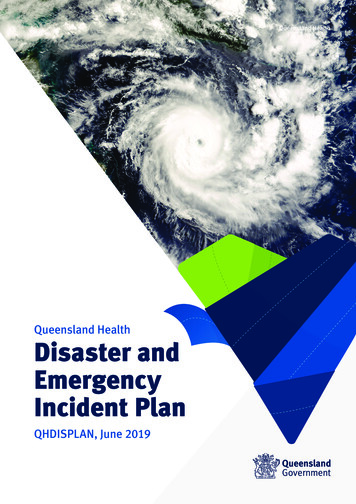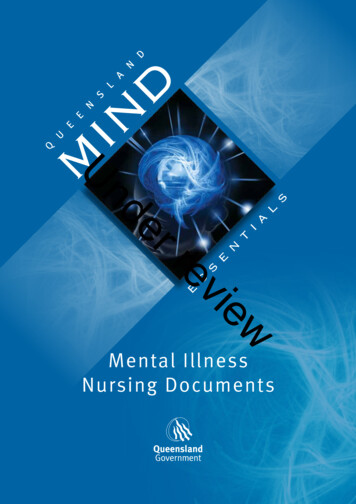
Transcription
ndUerwievreMental IllnessNursing Documents
ndUerwievreFirst published by the Hunter Institute of Mental Health in 2008.Revised by the Mental Health Directorate, Queensland Health in 2010.The copyright in this publication has been assigned to theState of Queensland (Queensland /au State of Queensland (Queensland Health) 2010
ForewordThe nursing workforce is fundamental to our ability to deliver healthcare servicesacross Queensland. Nurses are the backbone of our healthcare system.Each day Queenslanders present with a variety of health matters, including issuesrelated to mental health and wellbeing.UIn Australia, nearly half of the population will experience a mental disorder in theirlifetime, and the prevalence of mental disorders is high among people who areaccessing our general health and hospital services. Generalist nurses therefore need tohave access to reliable and up to date information regarding mental disorders.ndIn recognition of this, the Queensland MIND (Mental Illness Nursing Documents)Essentials resource, as developed by the Hunter Institute of Mental Health, has beenadapted for use in the Queensland context for all nursing staff in Queensland.erThe Queensland MIND essentials resource provides Queensland nurses with relevantinformation on different mental disorders, on how they may present in a generalnursing setting, practical strategies and guidelines for management, screening toolsand links to further information.wPaul Lucas MPDeputy PremierMinister for HealthievreThe distribution of this resource plays an important role in our ability to deliver aresponsive and integrated health service system for all Queenslanders, and representsour on-going commitment to supporting the Queensland nursing workforce.Page 1
ContentsForeword.1OverviewQueensland Mind essentials . 3Caring for a person experiencing a mental IllnessUCaring for a person experiencing an anxiety disorder . . 7ndCaring for a person experiencing depression . . 13Caring for a person who has an eating disorder .19Caring for a person who has a personality disorder .25erCaring for a person with dementia . 31Caring for a person experiencing mental illness in the perinatal period .37Schizophrenia fact sheet .43vreCaring for a person experiencing behaviours, features or symptomsthat may be associated with the presence of a mental IllnessieCaring for a person experiencing mania . 49Caring for a person experiencing hallucinations .55wCaring for a person experiencing delusions.61Caring for a person who is suicidal .67Caring for a person who is aggressive or violent .73Caring for a person who is intoxicated . 79Assessment toolsWhat is a mental health assessment? . 87Drug and alcohol screening assessment. 89Consumer storiesPersonal stories from consumers. 93Page 2Acknowledgements . 96
OverviewQueenslandMind essentialsMental illness nursing documentsfor nurses and midwivesUQueensland MIND Essentials aims to support nurses and midwives workingin general health care settings within Queensland Health (QH) hospitals andcommunities by providing information and strategies on a range of mentalhealth issues.ndThis project has been adapted for Queensland Health from the MINDEssentials Resource, developed by the Hunter Institute of Mental Health(HIMH) in 2008. MIND Essentials was produced in consultation with nursesand midwives in general acute and community settings, with assistancefrom clinical experts in mental health and academic staff of the University ofNewcastle.ervreThe resource is available online at the Mental Health Directorate homepage byfollowing the links to Queensland MIND Essentials (QHEPS and Internet sites).A printed copy is also available in your facility.Information on caring for a person experiencinga mental illnessieInformation in this section and includes:A case study providing a real-life example of how a person may present to ahospital or community setting.uAn explanation of the illness including associated symptoms, behaviours,causes and onset.uCommon reactions to nursing a person experiencing themental illness.uAppropriate goals when nursing the person.uPractical tips for responding to the person.uTreatment options.uReferral suggestions and contacts.uLinks to other sites for more information.wuPage 3
The following mental illnesses are discussed in this section:uAnxietyuDepressionuEating disordersuPersonality disordersuDementiauMental illness within the perinatal perioduSchizophrenia.Information on caring for a person presenting with behaviours, features or symptoms thatmay be associated with the presence of a mental illnessInformation on specific issues includes:uUA case study providing a real-life example of how a person may present to a hospital orcommunity setting.An explanation of the issue including associated symptoms, behaviours, causes and onset.uCommon reactions to nursing a person presenting with the issue.uAppropriate goals when nursing the person.uPractical tips for responding to the person.uTreatment options.uReferral suggestions and contacts.uLinks to other sites for more information.nduervreThe following issues are covered in this section:uAggressive or violent onswSuicidal thoughts or behaviourieuAssessment toolsThe following information to assist and inform a person’s care and management plan:uWhat is a mental health assessment?uDrug and alcohol screening assessment.Consumers storiesThis resource includes a range of stories about general hospital experiences by people with amental illness, who have attended the hospital for reasons other than their mental disorder.Page 4
We encourage you to use this resource to improveyour own knowledge and the nursing care you provide topeople who have a mental illness.This resource generally uses the term ‘nurses’ to refer to both nurses and midwives engagedin nursing care. All information in Queensland MIND Essentials is relevant to both nurses andmidwives.Additional resourcesAustralian Indigenous Health Infonetwww.healthinfonet.ecu.edu.auProvides a range of Indigenous health information and contacts.ndUbeyondbluewww.beyondblue.org.au or www.youthbeyondblue.com.au (youth website)Provides information on depression, suicide, anxiety, bipolar disorderand postnatal depression.erBlack Dog Institutewww.blackdoginstitute.org.auProvides information on depression (including the perinatal period)and bipolar disorder.vreMental Health Council of Australiawww.mhca.org.auMental health related information and factsheets.Multicultural Mental Health Australiawww.mmha.org.auMental health information and fact sheets in a range of languages.Sane Australiawww.sane.orgMental health related information, tips, links and online help.wieNational Drug and Alcohol Research Centrehttp://ndarc.med.unsw.edu.auInformation about substance-use related disorders and their management.Suicide Prevention Australiawww.suicidepreventionaust.orgProvides information on suicide and self-harm, suicide prevention and suicide postvention.Please refer to the online version of Queensland MIND Essentialswww.health.qld.au/mentalhealth for the most up-to-date information on this resource.Page 5
ndUerwievrePage 6
Caring for a personexperiencing anAnxiety disorderCase studyndUYou have visited Trang’s home to deliver equipment and to change dressingsfor her grandmother who is recovering from a fall. You notice that Trang hasshortness of breath, palpitations and dizziness. She is only 24, and when youask, she says she has been constantly worrying about her work and money.She says that she has experienced this before and the worry is stopping herfrom going out to do the shopping. You ring her GP and he suggests that shego to hospital for an assessment. Trang has symptoms that are characteristicof an anxiety disorder.The following information could help you nurse a patient like Trang.erWhat is an anxiety disorder?vreAnxiety disorders are a group of conditions marked by extreme or pathologicalanxiety or fear. In Australia anxiety disorders are the most common ofthe psychiatric disorders, with one in four people experiencing an anxietydisorder at some time in their life. Anxiety disorders have the potentialto interfere with a persons work, family and social life. They tend to bepersistent and can be disabling.ieAnxiety is a normal response to a threatening situation and can motivateus in a positive way, such as in sport or study. However, anxiety becomes aproblem when it interferes with normal functions, is unrelated to an actualthreat, causes physical symptoms and becomes intolerable to the person.wAnxiety disorders often occur together with depression, other medicalconditions and substance abuse. There are many different types of anxietydisorders which all have different symptoms. Characteristics of thesedisorders include:uGeneralised anxiety disorder: feelings of constant apprehension anda general tendency to be worried about many areas of life (for example,health, work, and finances).uSpecific phobias: an intense fear of a specific object or situation that leadsto avoidance of the fear-inducing trigger, interfering with normal living.uSocial phobia: the intense fear of being scrutinised, evaluated negativelyor being the centre of attention and consequent avoidance of situationswhere this may occur.uObsessive compulsive disorder: repeated obsessions (thoughts) andcompulsions (actions) that are time consuming and which seriouslyinterfere with daily living. Typical compulsions involve rituals such as handwashing or checking behaviours.Page 7Page 7
Anxiety disordersuPost traumatic stress disorder: a reaction to a serious traumatic event (such as a caraccident, natural disaster, physical abuse or sexual abuse) in which the person was extremelyafraid or seriously injured. It is characterised by dreams or flashbacks in which the traumaticevent is re-experienced, an avoidance of associated situations, increased vigilance and anumbing of emotional responsiveness.uPanic disorder: recurrent and unexpected panic attacks that begin abruptly and result inthe person experiencing a range of symptoms including: sweating, palpitations, shaking,shortness of breath, chest pain, choking, dizziness, feeling light-headed, abdominal painsand a fear of losing control or dying.In addition, some people can be described as ‘born worriers’, which is referred to as traitanxiety. Such people worry about seemingly minor matters, feel tense most of the time andare apprehensive or overly cautious in their approach to the world. They are likely to be moreanxious than their peers in comparable situations. In the extreme, this may lead to more severesymptoms and the development of an anxiety disorder.Causes of anxiety disordersUndAnxiety problems originate when the automatic ‘fight or flight’ response becomes oversensitive.We have all observed an overly sensitive car alarm which goes off at the wrong time. Similarly,if the body’s ‘alarm’ is too sensitive, the ‘fight or flight’ response will be triggered at the wrongtime. If the anxiety alarm goes off too easily, the person will be more likely to become anxious insituations where other people would not feel anxious.erAnxiety disorders are usually caused by a combination of biological, psychological and socialfactors. They may develop as a result of a major stressor such as the death of a loved one,divorce, loss of a job, or the actual threat of death or physical harm. A disorder may also arisebecause of unhelpful thoughts and negative thinking patterns as a result of learned behaviour(for example, an anxious parent may model anxious behaviours and poor coping strategies tohis or her child).vreThere also appears to be a major genetic component as a number of disorders have beenfound to run in families (for example, panic disorder, obsessive compulsive disorder and somephobias). Research for specific genes, including those related to neurotransmitters such asserotonin and dopamine, continues.wieDifficulties in diagnosisPhysical disease may present with symptoms that can easily be mistaken for anxiety. Cardiacarrhythmias may present with dyspnoea, palpitations, hyperventilation and only minor chestpain. Anxiety is also associated with temporal lobe epilepsy and phaeochromocytoma (adrenaltumour).Other medical conditions (such as hyperthyroidism and hypoglycaemia) and substance abuseneed to be considered in the diagnostic work-up. For example, drinking lots of coffee can leadto anxiety and panic attacks; amphetamines cause anxiety, irritability and tremulousness; andnarcotic withdrawal is accompanied by anxiety. Actions of other drugs such as bronchodilators,calcium channel blockers (many antihypertensives) and pseudoephedrine need to be excludedas possible causes before a diagnosis of an anxiety disorder is considered.Page 8
‘My mind just never shuts up. Do I look okay? Do they think I’m stupid? What if mum’shad a stroke? My boss didn’t smile at me this morning — I must have upset her. I worry allthe time about everything. And then I can’t sleep because of the worry. And I’m hypersensitive to what others say or might think, or all the bad things that might happen. AndI end up not doing things I want to do because they might go wrong. Or when I am doingthings I want to do, I don’t enjoy them because I’m worried about what might happenafter. It controls my life even though I don’t want it to.’Some reported reactions to people experiencing anxiety disordersAnxiety disordersA person’s perspective on what it is like to experience generalised anxietyNurses who have worked with people who have anxiety have reported the following reactions:DisregardFrustrationThis can develop when the strategies you have tried are unsuccessful andthe person continues to be distressed and anxious.erAnxietyndUWhen the level of anxiety is seen as being out of proportion to the issue,nurses may have difficulty understanding the person’s anxiety. Thismay lead to a minimisation or disregard for the person’s symptoms. Forexample, common beliefs expressed are ‘it’s all in her mind’ or ‘he shouldjust get over it’.Sometimes caring for someone with severe anxiety or a panic attackcan create a ‘contagious’ atmosphere, resulting in staff also becominganxious.vreCompassion fatigue This is more likely to occur if the person has family or relatives whoare also anxious and demanding due to their own frustration andapprehension about the person who is ill.ieGoals for nursing a person experiencing an anxiety disorderAppropriate goals for caring for a person with anxiety in a community or hospital setting include:wuDevelop a relationship with the person based on empathy and trust.uPromote an understanding of the features of an anxiety disorder.uPromote effective strategies for coping with anxiety.uPromote positive health behaviours, including medication compliance (if appropriate) andhealthy lifestyle choices (for example, diet, exercise, not smoking).uPromote the person’s engagement with their social and support network.uEnsure effective collaboration with other relevant service providers, through development ofeffective working relationships and communication.uSupport and promote self-care activities for families and carers of the person with anxiety.Page 9
Guidelines for responding to a person experiencing an anxiety disorderAnxiety disordersuArrange for a review of the person’s medication for anxiety and an initial or follow-upassessment if their care plan needs reviewing. A mental health assessment may beappropriate to undertake — see the MIND Essentials resource ‘What is a mental healthassessment?’.uA person’s cultural background can influence the way symptoms of mental illness areexpressed or understood. It is essential to take this into account when formulating diagnosisand care plans. Indigenous mental health workers or multicultural mental health coordinatorsand the Transcultural Clinical Consultation Service from Queensland Transcultural MentalHealth Centre are available for advice and assistance in understanding these issues.For more information please visit uLearn to identify the signs and symptoms of anxiety and panic, including triggers. Helpingpeople to recognise the symptoms is also the first step in teaching them self-managementtechniques.uReassure the person that anxiety disorder is a real medical condition.UA person with anxiety is often only just coping with their current circumstances, so be mindfulof not placing too many demands on them.uAvoid comments like ‘just relax’, ‘there’s nothing to worry about’ and ‘just pull yourselftogether’. It is more helpful to provide a reassuring presence.uAvoid dismissive statements such as ‘things can’t be that bad’ and ‘everything will be okay’,as the person might feel that you do not really understand his or her problems. This maymake the person unwilling to share other feelings.uEncourage the person to test and challenge the accuracy of thoughts and assumptions.uHelp the person to challenge the beliefs that are causing the anxiety by helping them toidentify alternative perspectives. For example, you could ask: ‘How have you gotten throughthis before?’.uEncourage use of self-management strategies such as relaxation and controlled breathingthat can help manage an anxiety attack.uHelp the person to identify and develop a range of contacts for support and socialisation.uMonitor recovery, compliance with medication and general physical health (includingnutrition, weight, blood pressure etc.). Provide education on possible side effects to anymedication (if appropriate) and work with the person to develop appropriate actions toaddress any issues.uBe aware of your own feelings when caring for a person with anxiety. Arrange a debriefing foryourself or any colleague who requires support or assistance — this may occur with a clinicalsupervisor or an employee assistance service counsellor (see below).nduerwievreThe Employee Assistance Service provides confidential, short-term counselling free-ofcharge to Queensland Health staff to assist them to resolve personal and work relatedproblems. For more information visit http://qheps.health.qld.gov.au/eap/home.htmPage 10
Treatment of anxiety disordersMonitoring for early signs of relapse is important, and early intervention may prevent full-blownsymptoms returning. Regular revision of management techniques may also be helpful.Counselling and psychological therapiesVarious approaches may be used in combination. These can include cognitive behaviour therapy(CBT), desensitisation and problem-solving strategies. The approach will be tailored to theindividual and type of anxiety, including:Psycho-education about anxiety, including information about signs and symptoms ofanxiety, reassurance that the feelings do not mean that the person is ‘going crazy’ or out ofcontrol and reaffirmation that anxiety is a normal physiological response (the ‘fight or flight’response) in an abnormal situation.uBehavioural techniques to help the person control the physical effects of anxiety (forexample, breathing and relaxation). A basic technique to control hyperventilation is a simplebreathing and relaxation exercise. Breathing in deeply (using the abdominal muscles) to acount of five, holding the breath for five and then breathing out to a count of five saying theword ‘relax’. This reduces hyperventilation and relieves some of the physical symptoms.ndUuAnxiety disordersMany treatment options are available to help people manage their anxiety and to prevent itcontrolling their lives. Those who have had an anxiety disorder for many years may also needhelp to make lifestyle changes once the restrictions imposed by rituals or avoidance are nolonger needed.eruvreThis technique needs to be practiced in a calm state in order to ensure that it can be usedwhen needed. Relaxation can be practiced in a number of ways, including Tai Chi, meditationor yoga. Similarly, a simple progressive muscle relaxation technique teaches the personto be aware of muscle tension and how to release the tension following a systematic andprogressive process. Nurses and midwives can assist a person to identify unhelpful strategies(such as the use of alcohol or avoidance) and promote relaxation activities (for example,taking a warm bath, listening to music, going for a walk, playing sport or a game, watching amovie, etc.).wieCBT techniques help the person learn to challenge the catastrophic thoughts that maybe exacerbating or maintaining the fear. People learn to identify the links betweenactivating events (A), the consequent feelings (C) and the thoughts or behaviours (B) thatemerge between A and C. If a person changes the unhelpful thinking or behaviour at B, asdemonstrated in the example below, a more positive outcome can be expected.Changing unhelpful thoughts or behavioursOriginal but unhelpful thoughtAlternative thoughtA I am invited to go to the moviesA I am invited to go to the movies.B I’m sure I’ll have a panic attack andeveryone will be watching and I’llmake a fool of myself.B I’ve been before and really enjoyed myself.I can always sit in a seat near the door and domy breathing or relaxation and leave if I have to.C There is no way I can go.C I would like to try to go.Page 11
MedicationAnxiety disordersMedication options include antidepressants, usually the SSRIs, and benzodiazepines.Benzodiazepines should generally only be used for short-term relief. Longer-term use ofbenzodiazepines may lead to tolerance and abuse and should be avoided where there iscomorbid substance abuse. All medications should be withdrawn slowly to avoid withdrawal ordiscontinuation syndromes.It has been shown that lifestyle factors such as overwork, nicotine intake and caffeine intakecan exacerbate anxiety. Adjustments should be made to these where possible. A combination ofmedication and psychosocial strategies is often effective.Discharge planningDiscuss referral options with the person and consider referrals to the following:GPuCommunity Child HealthuCommunity HealthuMental Health Services (infant, child and youth or adult)uPrivate service providersndUuTo access the contact numbers and details for your local services use QFinder(available on QHEPS) or call 13 HEALTH (1343 2584).erFurther readingFor more information, see the Mental Health First Aid Manual at www.mhfa.com.au(internet access required).vreSourcesieAndrews, G., Crino, R., Hunt, C., Lampe, L. & Page, A. (1994). The treatment of anxiety disorders. New York: CambridgeUniversity Press. Retrieved 11 March 2008 nfreemanuals.htmlwAustralian Bureau of Statistics. (1998). Mental health and wellbeing: Profile of adults, Australia, 1997. Canberra: Author.beyondblue (2006). What is an anxiety disorder? Retrieved 11March 2008 fromwww.beyondblue.org.au/index.aspx?link id 90Clinical Research Unit for Anxiety and Depression, St Vincent’s Hospital. (1999). Generalized anxiety disorder – Patienttreatment manual. Sydney: Author. Retrieved 11 March 2008 nfreemanuals.htmlClinical Research Unit for Anxiety and Depression, St Vincent’s Hospital. (J. Lam-Po-Tang & S. Rosser, Eds.). (1999). Panic –Patient treatment manual. Sydney: Author. Retrieved 11 March 2008 nfreemanuals.htmlJudd, F. & Burrows, G. (2001). Anxiety disorders. In S. Bloch & B. Singh (Eds.), Foundations of clinical psychiatry (pp. 310-331).Melbourne: Melbourne University Press.National Institute for Clinical Excellence. (2004). Anxiety. Retrieved 24 April 2008 fromwww.nice.org.uk/guidance/index.jsp?action byType&type 2&status 3Rawlins, R. P., Williams, S. R. & Beck, C. K. (1993). Mental health-psychiatric nursing: A holistic life-cycle approach (3rd ed.).St Louis: Mosby Year Book, Inc.Page 12
Caring for a personexperiencingDepressionCase studyUPhil is a 60 year old retired accountant. He has suffered from asthma most ofhis life. He has been admitted to hospital for treatment of pneumonia. He istaking medication for depression but despite this he appears very down. Hereports that he has not been able to sleep, does not feel like eating and hasnot been interested in anything. He appears to be neglecting himself.The following information could help you nurse a patient like Phil.ndWhat is depression?erDepression is extremely common, affecting one in five Australians over theirlifetime. Depression is a word often used to describe feelings of sadness andgrief that all people experience at times. However, for a person to be clinicallydiagnosed with a depressive disorder, his or her symptoms are usually muchmore intense and must have been present for at least two weeks. Depressionis commonly accompanied by feelings of anxiety or agitation.vreSymptoms and types of depressionieDepression is also referred to as a mood disorder. The primary subtypes aremajor depression, dysthymia (chronic and usually milder depression), andatypical depression.wDepression that begins or occurs during or after pregnancy is referred toas a type of perinatal mood disorder (which includes ante-natal and postnatal depression). See the MIND Essentials resource ‘Caring for a personexperiencing mental illness in the perinatal period’ for more information.Depression that occurs in conjunction with episodes of mania may besymptomatic of bipolar affective disorder. See the MIND Essentials resource‘Caring for a person experiencing mania’ for more information.Core symptoms of depression include:usleep disturbanceuappetite or weight changesudysphoria (a ‘bad mood’, irritability, or sadness)uanhedonia (loss of interest in work, hobbies, sex, etc.)ufatigue (often manifesting as difficulty completing tasks)uagitation or retardation, especially in the elderlyudiminished concentration, difficulty with simple tasks, conversations etc.Page 13Page 13
Depressionulow self-esteem or feelings of guiltusuicidal thoughts present in two-thirds of people experiencing depression.Children and adolescents may present with an irritable or cranky mood rather than being sad ordejected.Causes, onset and course of depressionPeople may experience depression as a result of any one (or more) of a range of factors,including:ubiochemistryuphysical stressuseasonal influencesugenetic predispositionulife stressorsupersonality factorsuchronic or sustained illnessDepression may have an acute or gradual onset and can be experienced any time over thecourse of a person’s life.UDifficulties in diagnosisndDepression can be difficult to diagnose, as people may present complaining of physicalproblems, which may obscure a psychiatric diagnosis. Depressive disorders often coexist with,and may be secondary to, other mental disorders. Particularly high rates of depression arefound in people with alcohol-related disorders, eating disorders, schizophrenia and somatoformdisorders (vague physical complaints with no physical basis). Determining which disorder isprimary and which is secondary is often a difficult task.ervreMany of the people nurses care for, both young and old, are at risk of developing depressiondue to longstanding physical illness and disability. Further, depression can present as an earlysign of dementia. It is important then for nurses to remain alert to this possibility.See Table 1 in the MIND Essentials resource ‘Caring for a person with dementia’ for helpfulinformation on the different features of depression and dementia.iewA person’s perspective on what it is like to experience depression‘When I am depressed I feel raw, extremely sensitive and trapped in a black hole. I feeltired all the time because I struggle to sleep. One of the worst times is in the early hoursof the morning because I wake up all alone in the darkness and everyone and everythingin my world is asleep. I find it so hard and hurtful when people tell me to “pull myselftogether” because I simply don’t have the energy to get out of the black hole I’m trappedin. I then feel like a failure because I can’t pull myself together.’Page 14
Some reported reactions to people experiencing depressionDisregardWhen depressive symptoms are seen as being able to be controlled,unacceptable or embellished, nurses may have difficulty understanding theperson’s experience. This may lead to a minimisation or disregard for theperson’s symptoms. For example, common beliefs expressed are ‘it’s all in hermind’ or ‘he should just get over it’.InadequacyNurses can feel inadequate if strategies are not helpful in making a quick impacton the depression.FrustrationThis can develop when suggested strategies by the nurse are unsuccessful andthe person continues to feel hopeless
Essentials Resource, developed by the Hunter Institute of Mental Health (HIMH) in 2008. MIND Essentials was produced in consultation with nurses and midwives in general acute and community settings, with assistance from clinical experts in mental health and academic staff of the University


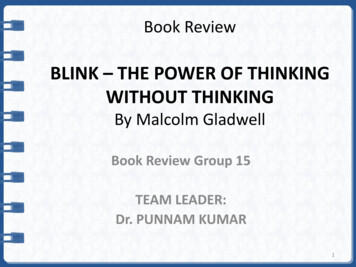
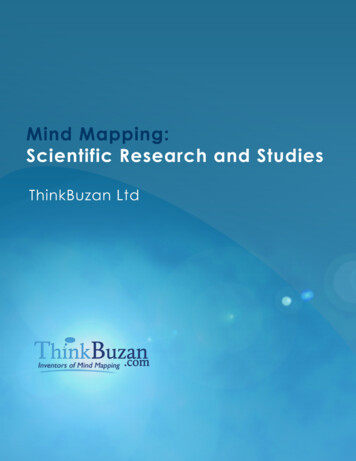
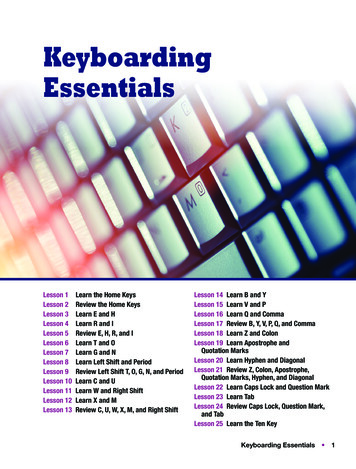
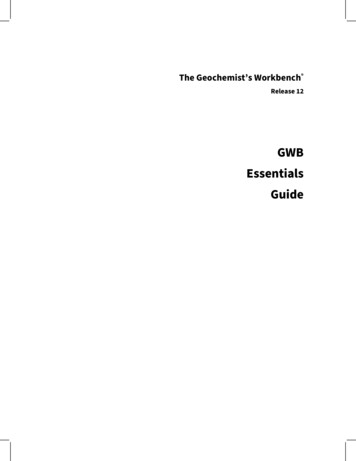

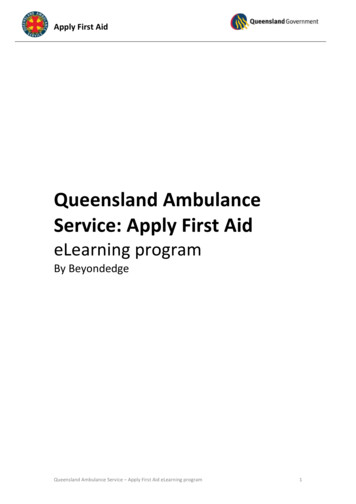
![Clinical Biostatistics [CLB]](/img/6/study-guide-clb-2021.jpg)

